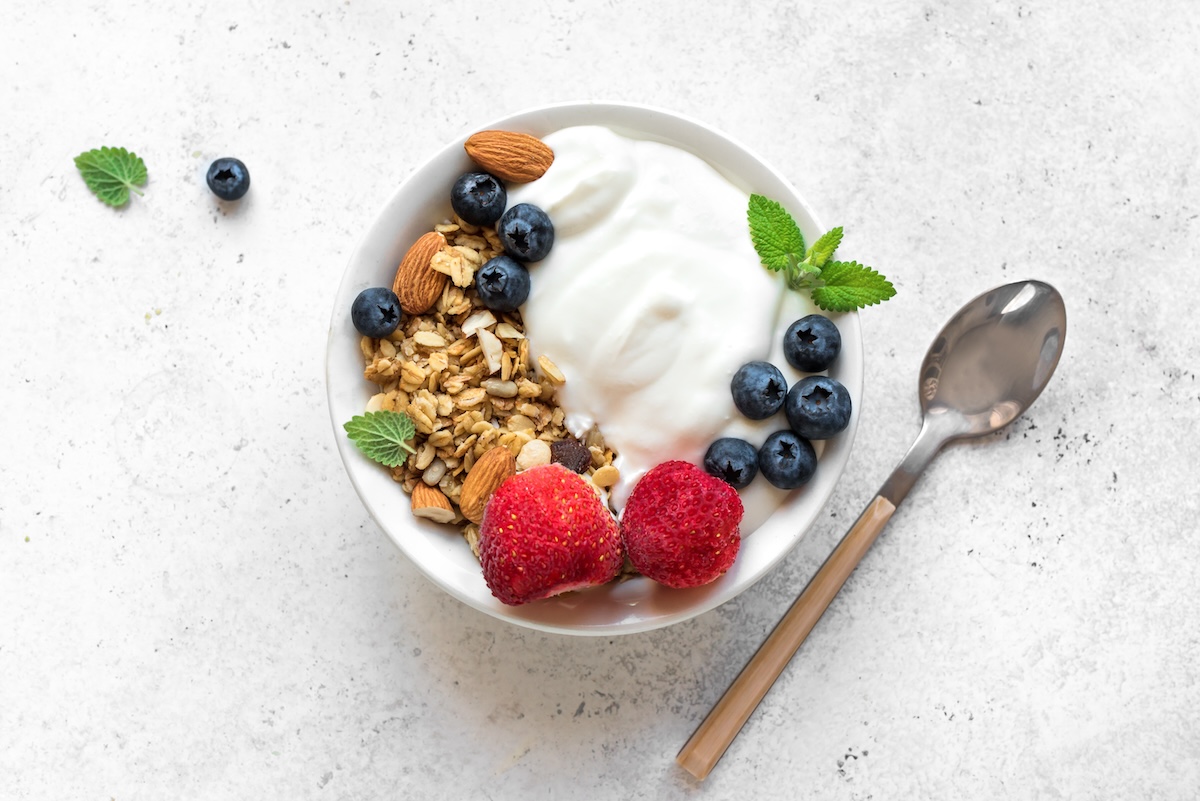Natural vs. Added Sugar: What’s the Difference
Natural sugars are found in foods like fruit (fructose) and milk (lactose). These foods also come with vitamins, minerals, and fiber, which help your body process sugar more slowly.
Added sugars are sweeteners added during cooking or food processing. They add calories without nutrients — and can raise your blood sugar, blood pressure, and weight.
🍐 Examples of natural sugars
- Fruit (apples, berries, oranges)
- Plain milk or unsweetened yogurt
- Vegetables like carrots or peas
🍪 Examples of added sugars
- Soda, sweetened tea, or flavored coffee
- Flavored yogurt or cereal
- Baked goods and sauces (like ketchup or BBQ sauce)

How to Tell Natural vs. Added Sugar on the Label
Check both the ingredient list and the Nutrition Facts label.
Ingredient list
If sugar (or something that looks like sugar) is listed near the top, it’s an added sugar. Look for words like:
- Sugar, brown sugar, cane sugar
- Honey, syrup, molasses
- Corn syrup, fruit juice concentrate
- Anything ending in “-ose” (like glucose or fructose)
Example:
- Milk, strawberries, sugar → milk and strawberries have natural sugars, but “sugar” was added.
- Milk, strawberries → only natural sugars.
Nutrition Facts label
- Total Sugars = natural + added combined
- Includes Xg Added Sugars = the sugar added during processing
Example:
- Total Sugars: 12g
- Includes 6g Added Sugars
→ Half is natural (from milk or fruit), half is added

But All Sugar Counts as Carbs
Whether natural or added, all sugars count as carbohydrates on the label. If you’re watching blood sugar, focus on total carbohydrates since all sugars affect your numbers. Even natural sugars can raise blood glucose, especially if you eat too much at once. Still, natural sugars are the better choice because they come with fiber and nutrients.
Smart Swaps to Cut Added Sugar
- Choose plain yogurt and add fresh fruit instead of flavored versions
- Pick whole fruit instead of fruit juice or dried fruit
- Use spices like cinnamon or vanilla for sweetness instead of sugar
- Drink water or unsweetened tea instead of sweetened drinks
The Bottom Line
Natural sugars in whole foods can fit into a healthy eating plan. It’s the added sugars, especially in larger amounts, that deserve the most attention. It’s important to note that if you’re managing blood sugar, you should look at total carbohydrates rather than just sugar on the label. A quick label check can go a long way in protecting your heart, blood sugar, and energy.



